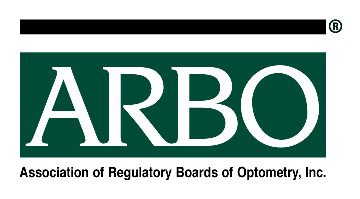May 15, 2018
ARBO and Your Board
What role does ARBO play with the regulatory boards?
To start, ARBO is a member organization made up of optometric regulatory boards in the United States, Canada, Australia and New Zealand. ARBO’s only interests are those of its member boards and of the regulations that the optometry boards are charged with enforcing. Simply put, ARBO’s mission is to serve its member boards.
ARBO provides services and programs for its members to lessen the burden on state/provincial governments for:
Initial licensure:
- NBERC – National Board Examination Review Committee
- NBERC is responsible for ensuring that the National Board Exams meet all requirements for testing the entry-level competency of optometrists.
- ARBO’s member boards rely on the National Board Exams when issuing a license in their jurisdiction. The members, through NBERC, are able to review the exam development process and provide feedback and recommendations.
Maintenance of licensure:
- COPE– The Council on Optometric Practitioner Education, created by ARBO’s member boards, accredits continuing education activities and providers based on the requirements set by the optometric licensing boards.
- OE TRACKER– Captures and stores continuing education attendance data electronically for optometrists and licensing boards. The data can be accessed online by both the optometrist and the licensing board, saving time and paperwork by allowing for up to 100% electronic audit.
Regulatory Training and Research:
- ARBO’s Annual Meeting each year contains sessions for training of regulatory board members and a legal update of regulatory issues.
- ARBO will research regulatory issues for its members and find out how other regulators are dealing with the same issues.
Regulatory Capture
ARBO is aware of attempts at regulatory capture. This is when a group tries to influence a regulatory board to think more about protection of the profession than protection of the health and welfare of the public. In order for regulatory bodies to be effective and defensible, they must be free of influences that may try to corrupt their mission. In many cases, this influence comes from the professional advocacy groups or any special interest group that may be affected by regulation. That is not to say that advocacy or special interest groups are bad. Quite the contrary; most serve their profession or special interest well. As a regulator, however, it is critical that the differences between advocacy and regulatory are understood.
Advocacy serves to protect the profession of optometry; regulatory serves to protect the public when receiving services from the optometric profession. That does not mean that we work against professional advocacy organizations. Optometry is a proud profession and our professional organizations understand the importance of excellence in patient care and protection. In many ways, we fight the same battles for providing quality care for patients, but our roles are distinctly different.
Risks of Allowing Advocacy to Influence Regulatory
Most regulatory boards contain both optometrists and non-optometrist members. Optometrists have a significant role in regulation in that they are experts in the profession and are uniquely qualified to judge whether the services provided are competent, ethical, and meet the standards outlined in in law. However, if an advocacy group were to influence the judgment of an optometric board member that would constitute a significant conflict of interest and could jeopardize optometric representation on the board. Loss of optometric representation on regulatory boards would leave the boards without competent optometric expertise which could put the public at even greater risk.
One could rightly say that having any optometrist on a state or provincial licensing board creates a conflict of interest. Conflicts of interest often cannot be avoided, but they can be identified and managed to a satisfactory degree. Part of that management is to understand that all actions and judgments must be as government agents representing the best interest of the public we serve. We manage the conflict of interest by understanding our role as regulators and professional experts and not allowing our board position to be influenced (or seen as being influenced).
